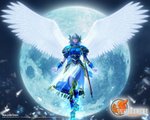




In studying cameos recently, I have found an enormous range in descriptions between those made by extremely erudite writers and those who are 'clueless'. This is true not only where the actual composition of the cameo is concerned but with respect to the subject matter as well.
I once wondered what visitors from the future would make of the 'Barbie' doll as a cultural icon, whether she would be mistaken as a cult figure of a popular goddess or would be recognised as a doll. We are fairly familiar with the belief systems from Western cultures during the past two hundred years and thus know that mythological references in cameos and other forms of art were not intended to be taken too seriously in spiritual terms, but nevertheless, the figures do belong to myths that once were familiar to every schoolboy and schoolgirl.
A beautiful cameo depicting Leda and Zeus in the form of a swan was described as 'a Victorian era woman seated next to a pond feeding a goose'. How far have the lofty fallen! The tale of Leda and the swan was one that inspired centuries of Western art and yet apparently has been lost in the mists of 21st century ignorance of the Classics. Another writer described Dionysus as a 'goddess'.
Perhaps what is depicted is a 'goose' and nothing more than a lady strolling in a park, feeding the local bird population, but I rather doubt that. Classical Western mythology lingered far longer in cameo carving than other popular forms of art, probably because of its use in personal adornment.
One curious anomaly in modern classical mythological cameos is the depiction of Zeus as an eagle being fed or given water by his cupbearer. According to my own recollections, it was when Zeus abducted the young boy Ganymede that he took the form of an eagle, but many of these cameos describe the character who feeds the eagle as Hebe, Zeus' daughter. She was the cupbearer to the gods until she was superceded by Zeus' beautiful (forcibly raped) male lover Ganymede but the cameos often do depict a woman in the role and descriptions name her as Hebe.
Hebe was the wife of Hercules and had the power supposedly to restore youth to the aged. One could understand her popularity in cameo carvings, but it is odd to show her feeding her father in the form of an eagle when in fact, her father in that guise rejected her services in favour of those of the young Ganymede.
Some of the cameos mistakenly label a male figure as Hebe when it should be Ganymede, but in some cases, the cupbearer definitely is a woman.
One misrepresentation can lead to another, especially where popular art forms are concerned. If one 'Master' carves a female in place of a male either from personal preference, ignorance or the explicit order of a customer, his lead may be followed by the next artist...
I have found that native Italians are more schooled in classical Greek and Roman mythology and history than the general public elsewhere but neither art nor mythology are equivalent to history and artists have the ultimate power to do what they wish with characters from myth. On the other hand, it is a pity when knowledge of the old myths is lost completely.
I suppose it would be politically incorrect to teach schoolchildren tales of forcible sexual subjugation of various virginal boys and girls by the gods in animal form. Bestiality and the crime of rape appear to be condoned, even expected in these old myths, if one does not study the symbolism and rituals inherent in the tales properly. Even if one were to explain the symbolism to make the acts of the gods more palatable, the fact of Hera's wrath as a wronged spouse cannot be so easily re-interpreted to harmonise with a politically correct version of the myth.
In fact, though, animals represent power and the act of congress between a woman and a god in the form of an animal should empower the woman rather than making her a victim of a lustful male out of control. The ancient myth of the Bull and Pasiphae probably initially represented a celestial marriage and only later was reinterpreted as a 'punishment' by the male god Poseidon of a male king by causing the king's 'chattel' in the form of his wife to desire to mate with a bull. What would have been an ancient ritual investing the Queen or High Priestess with divine power and authority became a source of ridicule. The Minotaur therefore became a 'monster' rather than a god such as Dionysus, who was both man and bull.
Incidentally, I have not found any cameos that depict THAT myth, but they probably do exist. Certainly the myth was portrayed often enough in ancient art forms.

No comments:
Post a Comment